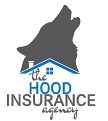Understanding Replacement Cost, Actual Cash Value, and Coinsurance in Business Insurance
As a business owner in Washington state, having the right insurance coverage is essential for protecting your assets. At our Lynnwood, WA-based insurance agency, we specialize in helping business owners navigate the complexities of commercial property insurance. One of the most critical aspects of insuring your property is understanding the difference between Replacement Cost Coverage and Actual Cash Value Coverage, as well as how coinsurance can impact your claims. Additionally, as of January 1, 2022, labor costs cannot be depreciated in an Actual Cash Value (ACV) policy. Let’s break these concepts down so you can make informed decisions for your business.
Replacement Cost Coverage (RC)
Definition: Replacement Cost Coverage pays the amount needed to replace or repair damaged property with materials of similar quality, without factoring in depreciation.
Key Benefits:
- Ensures that your business can rebuild or replace property at current market prices.
- Provides peace of mind knowing you won’t have to cover the gap caused by depreciation.
Example: Suppose your commercial building in Seattle is insured under Replacement Cost Coverage and suffers significant damage due to a fire. If the cost to rebuild the structure with similar materials and quality is $2,000,000, Replacement Cost Coverage will provide the full $2,000,000 to rebuild, subject to policy limits and deductibles.
Actual Cash Value Coverage (ACV)
Definition: Actual Cash Value Coverage pays the replacement cost of the property minus depreciation for age, wear, and tear.
Key Benefits:
- Typically results in lower premiums compared to Replacement Cost Coverage.
- May be suitable for businesses with older property or those looking to reduce insurance costs.
Important Update: As of January 1, 2022, labor costs cannot be depreciated in an ACV policy. This means that while materials may still be subject to depreciation, labor costs for repairs or replacement must be reimbursed at full value.
Example: Using the same commercial building example, if the building’s depreciated value is $1,200,000, the ACV payout would cover only $1,200,000—leaving you to make up the $800,000 difference if you need to rebuild at current market prices.
Coinsurance: What It Is and Why It Matters
Coinsurance is a clause in many business insurance policies requiring you to carry coverage equal to a specified percentage (typically 80%, 90%, or 100%) of your property’s total value. If you fail to meet this requirement, you could face a penalty when filing a claim.
How Coinsurance Works:
Formula: (Insurance Carried ÷ Insurance Required) × Loss = Claim Payout
Example:
- Property value: $1,000,000
- Coinsurance requirement: 80% ($800,000)
- Insurance carried: $600,000
- Loss: $200,000
- Payout = ($600,000 ÷ $800,000) × $200,000 = $150,000 (minus any applicable deductible).
In this case, because the insured amount was less than the required 80% of the property value, the business would only receive a portion of the claim—leaving them to cover the rest out of pocket.
Avoiding Coinsurance Penalties:
- Regularly assess your property’s value and update your coverage as needed.
- Work closely with your insurance agent to ensure your policy meets coinsurance requirements.
Choosing the Right Coverage for Your Business
Understanding these concepts can help you select the coverage that best fits your business’s needs:
- Choose Replacement Cost Coverage: if you want full protection against the cost of replacing property at current market rates.
- Consider Actual Cash Value Coverage: if you’re comfortable covering the depreciation gap or are insuring older assets.
- Monitor Coinsurance Requirements: to avoid penalties and ensure you’re adequately protected.
At our Lynnwood, WA-based insurance agency, we specialize in business insurance solutions tailored to Washington state business owners. Contact us today to discuss your options and ensure your business is fully protected against the unexpected.

